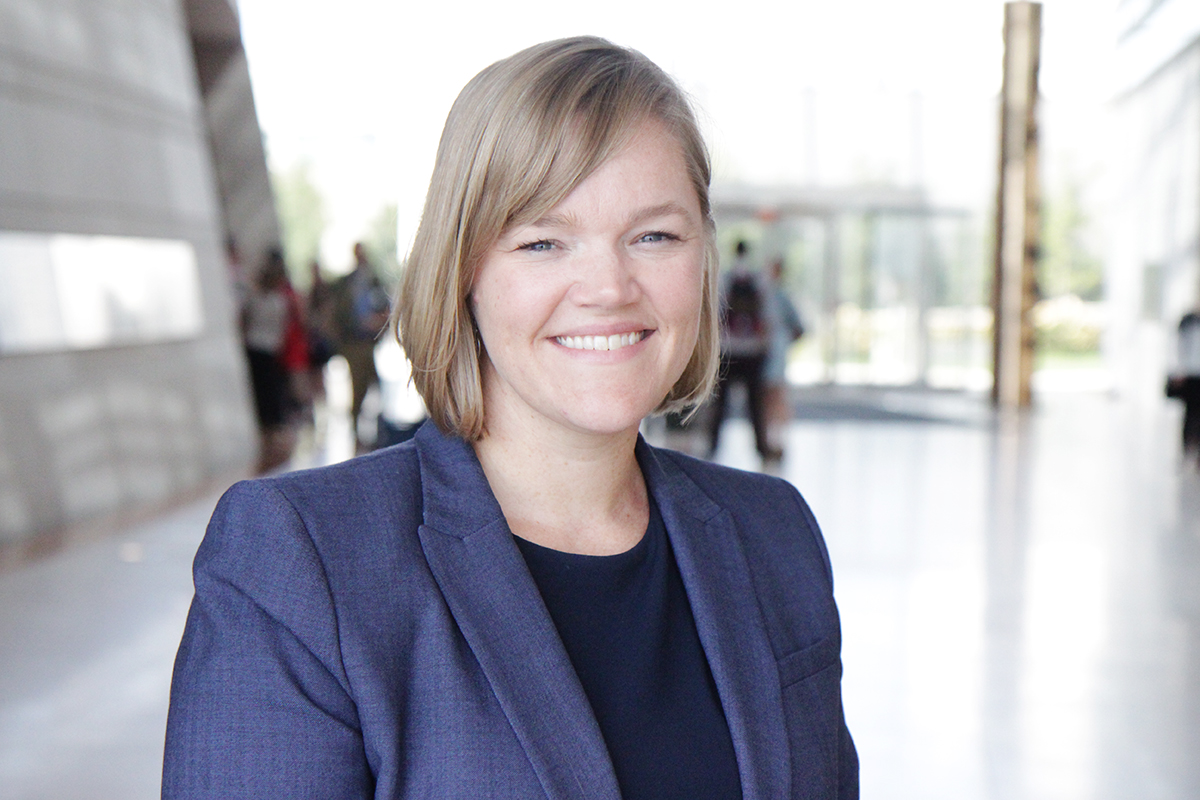
A new study is the first to look at how perceptions of artists in local communities affect opinions toward public funding for artists. Urban and regional planning professor Jennifer Novak-Leonard, who is the director of the Arts Impact Initiative for the College of Fine and Applied Arts, was a study co-author.
Courtesy Jennifer Novak-Leonard
CHAMPAIGN, Ill. — People are significantly more supportive of public funding for artists when they see artists as collaborators who are working to bring attention to and help solve problems in their communities, according to a new study.
The study is the first empirical test of how perceptions of artists in local communities affect opinions toward public funding for artists, the researchers said. It was published in The Journal of Arts Management, Law, and Society.
"There is very little research that exists on public opinion about artists, and we know public opinion greatly matters for motivating public policy," said co-author Jennifer Novak-Leonard, an urban and regional planning professor at the University of Illinois Urbana-Champaign and the director of the Arts Impact Initiative in the College of Fine and Applied Arts, which focuses on roles of art and artists in community development and social well-being.
"This research is especially timely, as there are a lot of initiatives launching to assist artists amid the pandemic, given the financial hit they've taken, and to amplify and support the roles that they have been playing to heal communities after social distancing and isolation," Novak-Leonard said.
Novak-Leonard and co-author Rachel Skaggs, a professor of arts management at Ohio State University, used survey data from 2017 and 2019 to examine what predicts support for public funding for artists, including sociodemographic factors, political ideology, being aware of artists in one's local community and perceptions of artists' roles in local communities. There is a body of research that has considered how sociodemographic characteristics predict support for public funding for the arts generally, but not for attitudes toward the funding of individual artists, Novak-Leonard and Skaggs wrote.
The results showed that people who had seen or interacted with artists in their communities were 1.5 to 2.5 times more likely to support public funding for artists. Those who see artists as collaborators within the local community were almost four times as likely to be supportive.
The study also showed that political ideology was a significant predictor of support for public funding for artists – those with liberal views were far more likely to be supportive than conservatives or moderates. Blacks and Hispanics were more likely than whites to favor public funding for artists, as were those with a college education.
The Works Progress Administration program during the Great Depression until World War II was one of the earliest and most significant means of government support for artists. Significant funding continued through the Cold War, when artists were seen as exemplifying ideals of democracy and freedom. During the culture wars of the 1980s and early 1990s, attitudes changed toward a market-driven ideology and in opposition to entitlement programs and activism for social change, leading the National Endowment for the Arts in 1994 to eliminate direct grants to individual artists, the researchers wrote. The vast majority of public arts funding now goes to organizations such as state art agencies and to arts initiatives, not to individual artists.
"When the NEA shifted their allocations away from funding individual artists, some of their reasoning was based on perceptions of artists. Our survey gives insight into the contemporary perceptions that Americans have of artists in their community and how these perceptions are related to support for public funding," the researchers wrote.
There has been a paradigm shift in recent years to view artists as contributors to solutions for social problems and strengthening social connectedness, particularly at the local level, Novak-Leonard said.
"People see artists in roles as problem solvers in the community, as catalyzers to address issues" such as beautifying a space in a community that has been used for undesirable activity or producing a theater piece stemming from local history and featuring local talent, she said. "The notion of culture wars and the debates that occurred in the '90s linger. Hopefully, this research helps move away from that so we can really focus on how to make investments and see the potential of artists who are working in these community-oriented ways."
Novak-Leonard cited several local examples:
- Illinois theatre professor Latrelle Bright creates work that addresses social justice and environmental issues.
- Illinois music professor William Patterson's Hip-Hop Xpress is a mobile classroom and sound studio to teach about Black cultural contributions and entrepreneurship and promote community building.
- Sam Smith, the director of civic engagement and social practice at Krannert Center for the Performing Arts, works with various community groups on issues such as youth engagement, violence prevention and arts enrichment.






